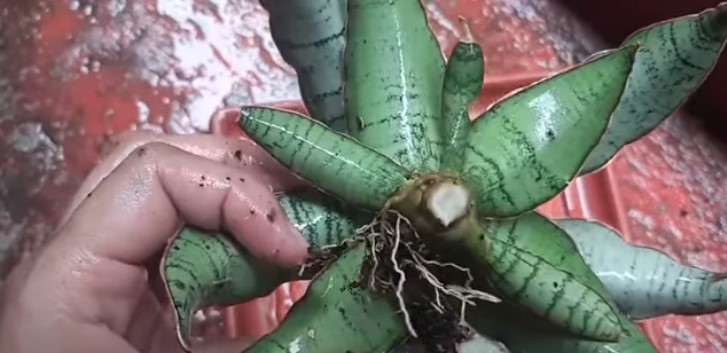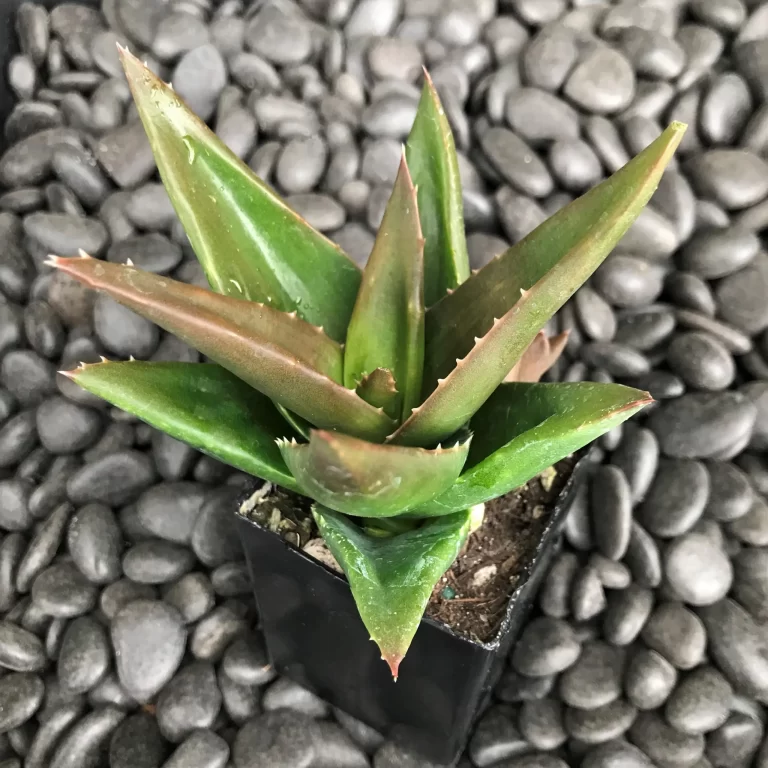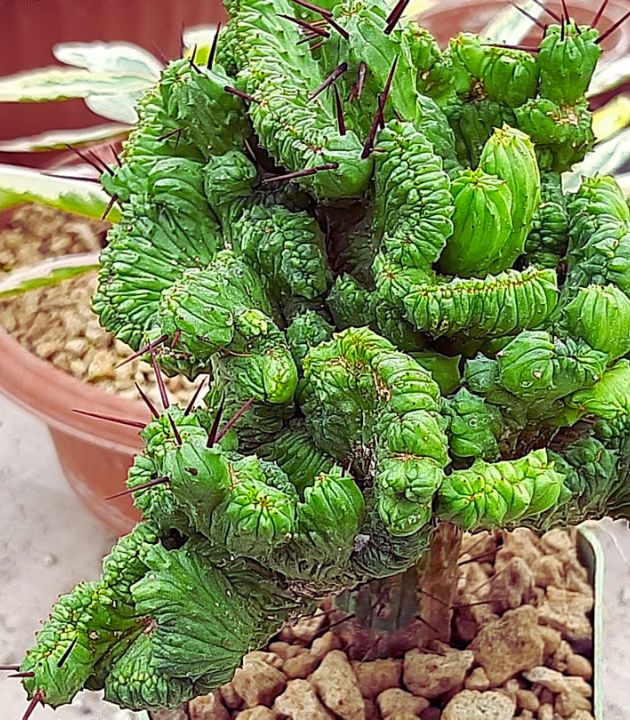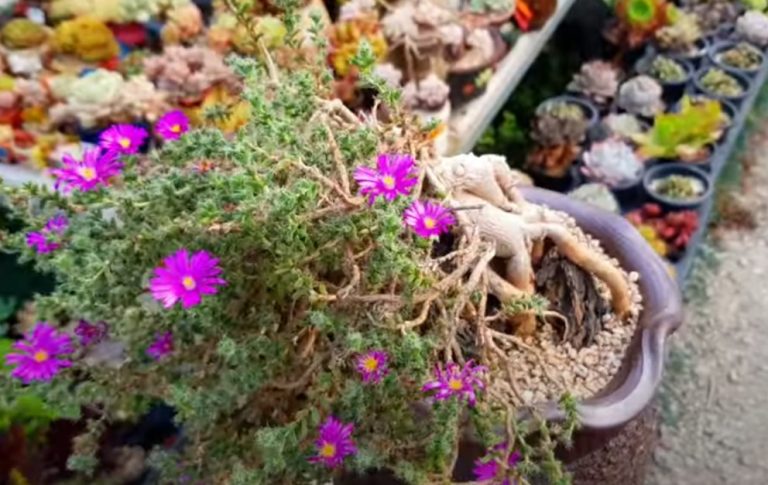Unraveling the Mystique of Sansevieria Cleopatra: Care Tips and Tricks

Sansevieria Cleopatra, also known as Snake Plant or Mother-in-Law’s Tongue, is a stunning and unique plant that has gained popularity in indoor decor. Its striking appearance and low-maintenance nature make it a favorite choice for plant enthusiasts of all experience levels. This article will explore the overview, historical significance, unique characteristics, and importance of Sansevieria Cleopatra in enhancing indoor spaces.
Overview of Sansevieria Cleopatra
Sansevieria Cleopatra is a species of succulent plant belonging to the Asparagaceae family. Its leaves are elongated, sword-like, and varied with shades of green, yellow, and creamy white. The plant has a notable architectural form, featuring tall, upright stems that display a graceful and elegant appearance. It is a compact variety, reaching a height of about 18 inches, making it suitable for large and small spaces.
Historical Significance of Sansevieria Cleopatra
The Sansevieria genus has a rich historical background, and Sansevieria Cleopatra is no exception. Originating from West Africa, this plant has been cultivated for centuries due to its multiple uses. Ancient Egyptians and Africans believed the plant possessed protective properties against evil spirits and that its sharp leaves could ward off venomous creatures. It was also highly regarded as a symbol of good fortune and prosperity.
Unique Characteristics of Sansevieria Cleopatra
Sansevieria Cleopatra boasts several distinctive characteristics that set it apart from other houseplants. Firstly, its variegated foliage adds a touch of visual interest to any space, creating a focal point that effortlessly draws the eye. The sword-like leaves feature wavy edges, mimicking the regal waves of Cleopatra’s headdress, adding a touch of elegance to its appearance. Additionally, this plant is known for its air-purifying qualities, making it a popular choice for improving indoor air quality.
Importance of Sansevieria Cleopatra in Indoor Decor
Sansevieria Cleopatra is vital in indoor decor, as it brings a refreshing and natural element to any room. Its unique form and variegated foliage effortlessly complement various interior design styles. Whether placed on a windowsill, as a centerpiece on a coffee table, or as a statement piece in a corner, Sansevieria Cleopatra adds a touch of sophistication and tranquility to any space. Furthermore, its low-maintenance nature makes it an ideal option for busy individuals or those lacking a green thumb.
Understanding the Growth Requirements

To ensure the good growth and health of Sansevieria Cleopatra, it is crucial to understand its specific growth requirements. Let’s explore the important factors to consider when cultivating this stunning plant.
Essential Light Requirements for Sansevieria Cleopatra
Sansevieria Cleopatra thrives in bright, indirect light conditions. It can tolerate low light conditions but may lead to slower growth and less vibrant foliage. Ideally, place the plant near a window with filtered sunlight or in a well-lit room where it can receive adequate natural light throughout the day. However, ensure it is not exposed to direct sunlight, as it may scorch the leaves.
Temperature Tolerance and Indoor Placement Considerations
Sansevieria Cleopatra is resilient to various temperatures, making it suitable for indoor environments. It can allow temperatures as low as 50°F (10°C) and as high as 85°F (29°C). However, avoiding placing the plant near drafts or extreme temperature conditions, such as near air conditioning vents or radiators, is important. Choose a spot in your home where the temperature remains relatively stable throughout the year.
Proper Watering Techniques and Frequency
One of the reasons why Sansevieria Cleopatra is considered a low-maintenance houseplant is its minimal water requirements. It is important to keep away from overwatering, as this can may be cause root rot and other moisture-related issues. Allow the soil to dry between waterings, typically every 2-3 weeks. Put your finger into the soil to a depth of about 1-2 inches. If it feels dry, it is time to water the plant. Ensure you water thoroughly, allowing the excess water to drain from the pot’s drainage holes.
Selecting the Ideal Soil and Pot for Sansevieria Cleopatra
Sansevieria Cleopatra prefers well-draining soil to prevent soggy roots. A mixture of lowland moss, perlite, and sand is an excellent choice for promoting good drainage. Avoid using heavy or moisture-retaining soils that can trap excess water. When selecting a pot, opt for one with drainage holes at the lower to ensure proper water drainage. A container made of terracotta or ceramic is a suitable option, as it allows the soil to breathe and prevents water accumulation.
Fertilization Tips for Healthy Growth
Sansevieria Cleopatra has relatively low nutritional requirements. It is generally resilient and can thrive without frequent fertilization. However, a balanced houseplant fertilizer diluted to half-strength can contribute to its overall growth and vitality. During the growing season, normally from spring to early fall, fertilize your plant once a month. Remember to follow the manufacturer’s instructions for application rates and frequency.
Care and Maintenance of Sansevieria Cleopatra

Now that you have the growth requirements in mind let’s dive into the care and maintenance guidelines for Sansevieria Cleopatra to ensure its long-term health and beauty.
Recognizing Common Pests and Diseases
Sansevieria Cleopatra is generally resistant to pests and diseases, making it a hardy plant. However, some common pests that may infest it include mealybugs, spider mites, and scale insects. Daily check your plant for any signs of pest activity, such as webbing, sticky residue, or small crawling insects. If any pests are detected, promptly treat the affected plant with organic insecticidal soap or neem oil, following the manufacturer’s instructions.
Pruning and Dividing Sansevieria Cleopatra
Pruning and dividing Sansevieria Cleopatra are essential for maintaining its desired shape and controlling its size. Always use clean, sharpenend scissors or pruning shears to remove any yellowed, damaged, or overgrown leaves. This not only improves the plant’s appearance but also promotes new growth. Additionally, if your Sansevieria Cleopatra has become root-bound or if you wish to propagate it, dividing the plant is a simple and effective method. Remove the plant from its container, gently separate the rhizomes, and replant each in fresh soil.
Tips for Maintaining Ideal Humidity Levels
Sansevieriaopatra is adaptable to various humidity levels, making it suitable for environments. It can thrive in both dry and moist conditions. However, you live in a particularly dry climate or during the winter when indoor moisture tends to drop. In that case, you can increase humidity levels by placing a shallow tray filled with water near the plant or using a humidifier. This will help prevent the leaf tips from drying out.
Managing Propagation and Repotting Processes
Propagation is a rewarding and enjoyable way to expand your collection of Sansevieria Cleopatra or share it with fellow plant enthusiasts. You can employ various propagation techniques, including leaf cuttings, division, and growing from seeds.
Protecting Sansevieria Cleopatra from Environmental Stressors
Sansevieria Cleopatra is generally a resilient plant, but certain environmental stressors can impact its growth and vitality. Avoid exposing the plant to much temperature fluctuations, drafts, or direct sunlight, as these can cause leaf burn or discoloration. Additionally, be cautious not to overwater, as this can cause root rot and other moisture-related issues. Regularly check the leaves for signs of damage or pest infestation and take appropriate action if necessary.
Propagation Techniques for Sansevieria Cleopatra

Propagation of Sansevieria Cleopatra can be an exciting adventure for plant enthusiasts. Let’s explore the various methods you can employ to multiply your plant collection or share this beautiful houseplant with others.
Propagation through Leaf Cuttings
One popular method of propagating Sansevieria Cleopatra is through leaf cuttings. Select a good healthy leaf from the parent plant and carefully cut it into sections, ensuring each has at least one node. Make the leaf cuttings dry for a few days to prevent rotting, then plant them in a well-draining soil mixture. Keep the soil lightly moist until new shoots emerge, which can take several weeks. Once the new shoots have developed strong roots, you can transplant them into individual pots.
Division Method for Propagating Sansevieria Cleopatra
The division is another effective method for propagating Sansevieria Cleopatra. Carefully take the plant out of its container and gently pull apart the rhizomes. Ensure that each division has a healthy portion of the rhizome and adequate leaves. Replant each division in fresh soil, following the same care guidelines as the parent plant. Dividing Sansevieria Cleopatra allows you to propagate the plant and helps maintain its desired shape and control its size.
Growing Sansevieria Cleopatra from Seeds
Growing Sansevieria Cleopatra from seeds is a less common but rewarding method. Sow the seeds in a good-draining seed-starting mix and cover them lightly with soil. Make sure the soil is constantly damp but not drenched. The seed container should be placed next to a window that receives filtered sunlight in a warm, bright area. With patience and care, the seeds will germinate within a few weeks. As the seedlings grow, gradually acclimate them to normal room conditions. Once they have developed several sets of leaves, you can transplant them into individual pots.
Tips for Successful Propagation at Home
Successful propagation of Sansevieria Cleopatra requires attention to detail and the provision of ideal growing conditions for the new plants. Ensure that the soil is good-draining to prevent soggy roots. Keep the cuttings or divisions in a warm and bright area, but avoid direct sunlight. Maintain consistent moisture levels in the soil, neither overwatering nor allowing it to dry completely. Regularly monitor the new plants for any signals of pests or diseases and take appropriate action if needed. With patience, care, and proper propagation techniques, you can enjoy a thriving collection of Sansevieria Cleopatra in no time.
Troubleshooting Common Issues During Propagation
Propagation can sometimes present challenges, and it is essential to troubleshoot and address any issues that may arise during the process. Some common problems you may encounter include rotting leaf cuttings, slow or no germination of seeds, or weak growth in newly propagated plants. To prevent rotting:
- Ensure the leaf cuttings are adequately dried before planting them.
- Use a well-draining soil mixture and avoid overwatering.
- If the seeds do not germinate, check the temperature and humidity levels, providing optimal conditions for germination.
Weak growth in newly propagated plants may indicate inadequate light or overly moist soil. Adjust the growing conditions accordingly, ensuring the new plants receive sufficient light and appropriate moisture levels.
Frequently Asked Questions (FAQs)
As a popular houseplant, Sansevieria Cleopatra often garners many questions from plant enthusiasts. Let’s address some of the most frequently asked questions to provide the necessary information for this beautiful plant’s successful care and cultivation.
How often should I water Sansevieria Cleopatra?
Sansevieria Cleopatra requires infrequent watering. Water the plant thoroughly, allowing the soil to dry out between waterings. Typically, this means watering every 2-3 weeks. However, it is crucial to adjust the frequency based on environmental conditions and soil moisture levels. Always check the humidity content of the soil before watering.
What is the ideal location for placing Sansevieria Cleopatra indoors?
Sansevieria Cleopatra thrives in bright, indirect light. Keep the plant near a window with filtered sunlight or in a well-lit room where it can receive adequate natural light throughout the day. However, avoid exposing it to direct sunlight, which can scorch the leaves. Choose a location where the temperature remains relatively stable, avoiding drafts or extreme temperature fluctuations.
Can Sansevieria Cleopatra purify the air in my home?
Yes, Sansevieria Cleopatra is known for its air-purifying qualities. Like other varieties of Sansevieria, it can remove toxins from the air, like formaldehyde, xylene, and benzene. By having this plant in your home, you can enjoy better indoor air quality and a healthier living environment.
Is Sansevieria Cleopatra toxic to pets?
Unfortunately, Sansevieria Cleopatra is toxic to pets if ingested. It contains saponins, which can cause gastrointestinal discomfort, vomiting, diarrhea, and other symptoms. It is advisable to keep this plant out of reach of curious pets or consider alternative pet-friendly houseplants.
Why is Sansevieria Cleopatra considered a low-maintenance houseplant?
Sansevieria Cleopatra is a low-maintenance houseplant due to its impressive resilience and minimal care requirements. It can allow a wide range of light conditions, including low light, and can withstand periods of drought. Additionally, it is generally pest and disease-resistant. This makes it an ideal choice for busy individuals or those with limited plant care experience.
Summary

In this comprehensive article, we have delved into the fascinating world of Sansevieria Cleopatra. From its overview, historical significance, and unique characteristics to understanding its growth requirements, care and maintenance, propagation techniques, and frequently asked questions, we have covered all aspects of this remarkable plant. Whether you are a seasoned plant enthusiast or a beginner looking to add an aesthetically pleasing and low-maintenance houseplant to your space, this article has provided you with all the necessary knowledge and guidance for successfully cultivating Sansevieria Cleopatra. With its stunning variegated foliage, resilience, and air-purifying qualities, Sansevieria Cleopatra is an excellent choice for enhancing indoor spaces and creating a serene and inviting atmosphere.





